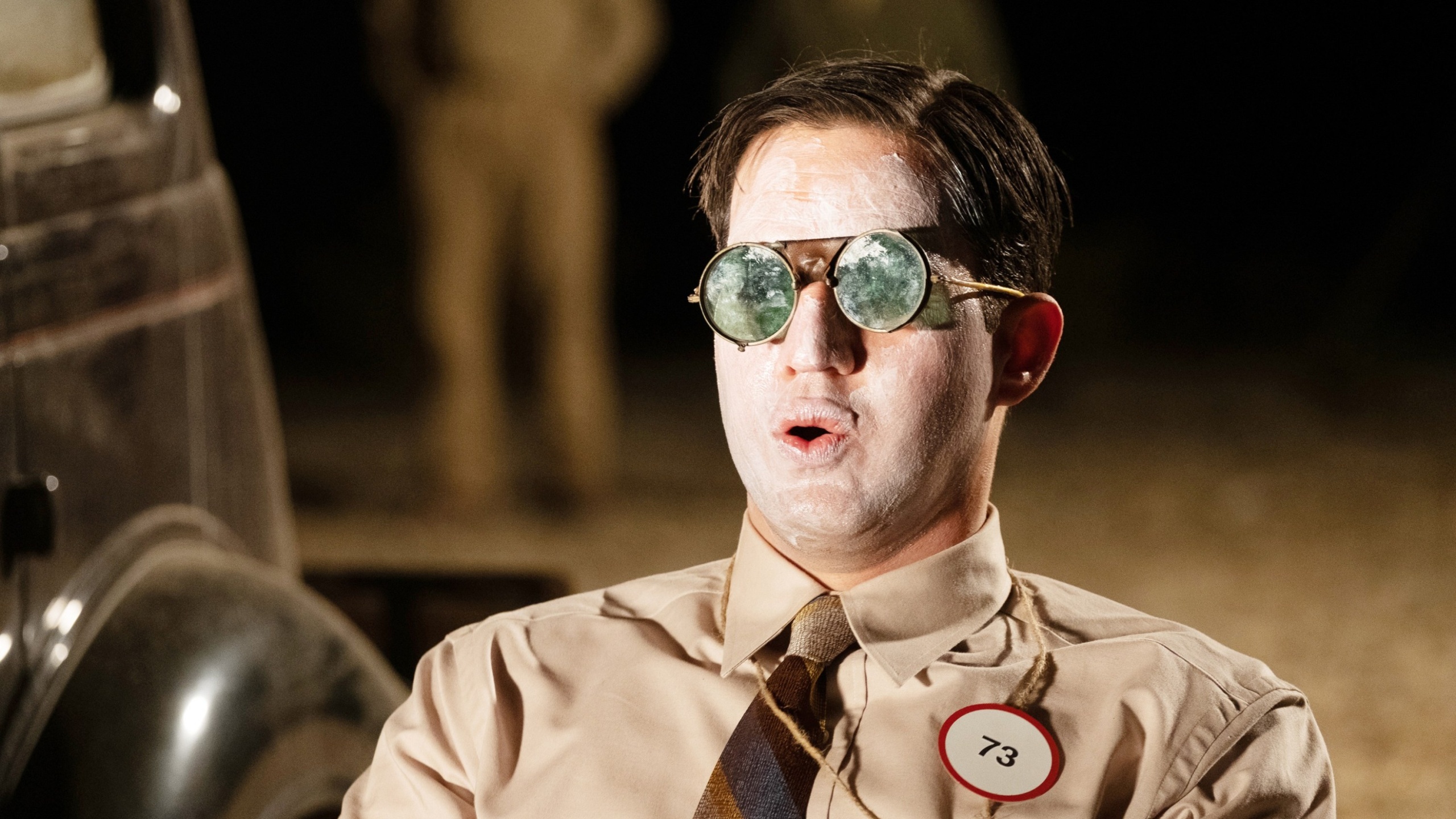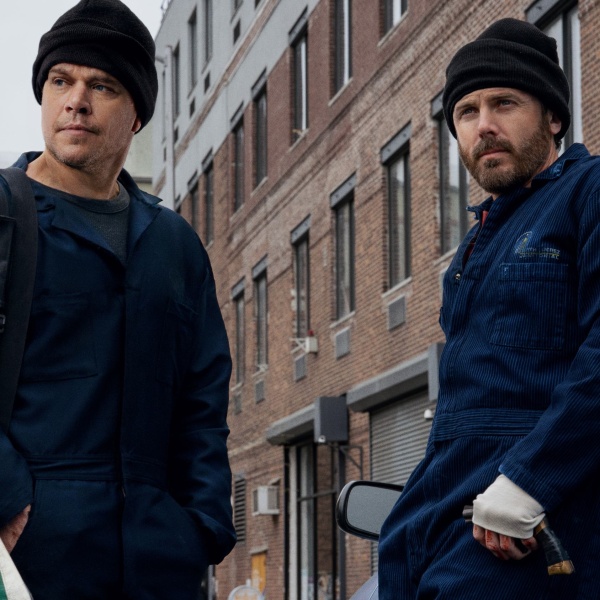Christopher Nolan‘s films are always immersive cinematic experiences, but “Oppenheimer” is an extraordinary piece of work even by the standards of the director who made “The Dark Knight,” “Inception,” and “Interstellar.” From its opening moments, the movie hardwires the audience’s synapses to the emotional experiences of its two lead characters, physicist J. Robert Oppenheimer and his nemesis, Lewis Strauss, as Nolan orchestrates every element of the frame to provide precise, expressive visual corollaries for the internal journeys of his protagonists. What really takes “Oppenheimer” to the next level, however, is its sonic complexity; with this film, Nolan’s longtime sound designer and supervising sound editor Richard King (in collaboration with an Oscar-nominated sound team comprised of production sound mixer Willie Burton and re-recording mixers Gary A. Rizzo and Kevin O’Connell) has created a mix in which every layer is both thematically motivated and viscerally charged — it’s a stunning aural achievement filled with subtleties that require multiple viewings to fully appreciate, even if the cumulative effect is immediately apparent.
The dynamism of the sound is all the more impressive given that, a few key sequences aside, “Oppenheimer” is the director’s least overtly action-based film to date, a straight drama without the set pieces that typically fill a Nolan spectacle. “On this film, I asked Richard to pay more attention to the backgrounds than we ever have and to creating a sense of space for each distinct location,” Nolan told IndieWire. “This being a film about people in rooms talking, it was very important that you feel the difference in each room.” To that end, King was meticulous about creating extremely specific environments for the many different locations. “It’s important when we cut to a new location to immediately know where we are and get a feeling for that location,” King told IndieWire, “whether it’s a busy hotel lobby or a conference room at Los Alamos or a classroom at Berkeley. So it was important to find sounds that stuck to each location and gave you a sense of the environment around the characters.”
While each of these environments is quite dense with atmosphere and effects, King insists that the goal is always to keep things as clear and simple as possible. “Ideally it’s best to use one sound, if you can find that sound that’s perfect,” he said. “That’s usually not possible to be realistic, it involves some layering, but we never go crazy with hundreds of tracks or anything. It’s really about trying to create a bold and clearly defined sense of location without too much wallpapering. Sometimes just one or two sounds can immediately pop you to a new location — maybe it’s a trolley car bell in Berkeley, or a lobby front desk bell in a hotel in Washington.” Often, on a Christopher Nolan film, the effects are production sound, not manufactured in post. “Chris loves the production track and we use every inch of it that we can,” King said, noting that several key sound motifs in the film — such as the stomping feet that recur at significant moments — were largely captured on set, though Nolan is quick to add that King “was able to build on that using foley, using effects, using a variety of different things.”
In order to capture the best possible production sound, Nolan and Burton rely on old-school methods that the director feels are still the most effective way of recording top-quality audio. “I’ve been doing this long enough to have seen the shift in on-set recording toward a type of recording that used to be only for television,” Nolan said. “That’s lavs, radio mics, and they’ve got heavily compressed sound. They’re not very good mics. They’re better than they were 30 years ago, but not compared with a boom-mounted mic with a full frequency that’s cabled rather than transmitted.” By running cable and using only microphones with hard lines, Burton and boom operator Douglas Shamburger capture not only better live recordings but give Nolan the perspective of the environment without having to resort to artificial reverb to impose perspective afterward. “And then Richard and Gary and Kevin reap the benefits when we have this library of material to work from at the end.”

Getting an accurate sense of perspective on set allowed King to use production sound for one of the most vital sections of the film, the lead-up to the Trinity bomb test. “The countdown was something we couldn’t improve,” King said. “It was just so right, and recorded in the stress of the moment on set. It had the perfect tone and the perfect business-like reading.” In fact, the voice audiences hear on the soundtrack counting down to the explosion is Nolan’s assistant director Nilo Otero, because he’s the one who read it aloud on set. “I never imagined for a minute we’d be able to use those initial recordings because we were shooting so fast and getting on with it, but that material was wonderfully incorporated,” Nolan said. “Willie’s recordings of the countdown in different locations are the kind of thing we can rebuild after the fact with digital tools, but there’s something in the initial recordings that Richard recognized that stuck to the picture in a wonderful way.”
That countdown, of course, leads up to the most dramatic moment in the film: the Trinity explosion that represents the culmination of years of work for Oppenheimer and his fellow scientists. For that moment, King took his cues from firsthand accounts of the test. “There are a lot of books, a lot of documentation,” King said. “Most of those people were interviewed the following day to get their immediate reactions before they’d had a chance to digest the experience, and they almost all mentioned sound in some interesting and unique and unexpected way. They didn’t describe it as just a big, loud noise. Those unique perspectives gave us inspiration and allowed me to get a visceral sense of what they must have experienced.”
That led to the moment where the film suddenly drops into what seems like silence, though, as Nolan points out, it isn’t actually silence at all. “It’s a very, very complicated set of atmospheres, live recordings of breathing and other sounds that Richard’s team beautifully put together,” Nolan said. “Then right when you’ve sort of forgotten it’s going to come, this sound comes that’s not the sound of an explosion, it’s the sound of the world changing forever. It’s the sound of the earth shifting off its axis. And I don’t want to give away any of Richard’s secrets, but when that washes over the audience, what I’m hearing are layers of different sounds that represent the almost 20 years that we’ve been doing this together. There are frequencies going on there from a lot of different things to create this extraordinary effect.”

That Nolan took such a bold approach to such a pivotal scene speaks to his trust in King after their decades of collaboration. “It was a very frightening concept for me to have to go out naked as it were,” Nolan said, “to have this long period of silence that was the physical reality of what it would have been. But I knew that Richard and his team would give me something very special and if anyone could pull off that moment, they could.” Once Nolan committed to the idea of cutting to silence, he decided to call back to it at another key moment, when Oppenheimer is giving a speech about the success of the Hiroshima bombing, and the horror of what he has unleashed begins to sink in. “There’s this reverberation of massive energy from the audience. So the idea that there would be this moment of silence as the light flashes, that echoes the reality of the Trinity test.”
For that moment, King employed an almost imperceptible sound of falling ash. “If you watch the film on headphones you’re probably more aware of it,” Nolan said, “this tiny sound that really makes you lean in before we reprise this wave of horror from the sound of the Trinity test.” The scene was one of the more arduous to nail down as Nolan, King, and the sound team remixed it again and again, constantly moving the music around to get the balance right, but in its final form, it not only represents the pinnacle of Nolan’s filmmaking — providing a direct visual and aural link to Oppenheimer’s psyche as everything begins to change for him — but reveals the benefits of Nolan’s collaborative approach. “I get a lot of feedback from Chris, but I also really appreciate the time that he gives me to work on my own and come up with my own ideas,” King said. “He wants somebody who can bring their own imagination to the table.”
When Nolan slipped into the back of the Chinese Theatre to watch “Oppenheimer” with a packed audience, he gained an even deeper appreciation of his sound team’s work. “Honestly, it was the most incredible sound I’ve ever heard in a theater, and the fact that these guys pulled it off for my film makes me prouder than I can say. The way Richard is able to incorporate Willie’s material and how Gary and Kevin are able to mix it is a wonderful team effort. Thrilling to watch as a director.”






